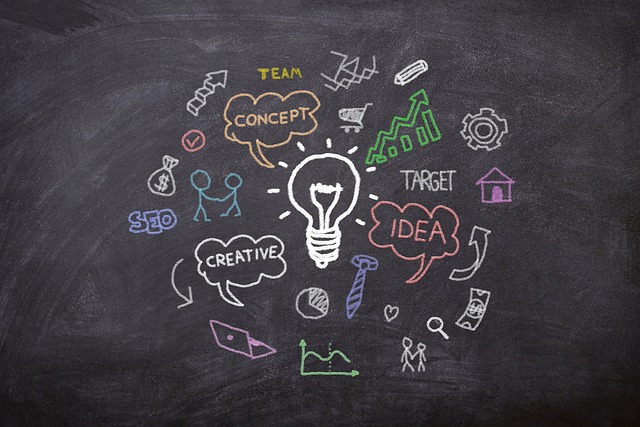AI innovation systems are transforming RV repair diagnostics by leveraging machine learning algorithms that analyze vast datasets of previous repairs, manufacturer specifications, and industry trends. These tools streamline repairs, provide accurate step-by-step guidance for complex issues, reduce human error, and predict potential failures before they occur. Implementing these systems involves a strategic process: assess current workflows, select suitable AI tools (e.g., predictive maintenance algorithms or parts recognition software), pilot test, train staff, gradually roll out, monitor performance, and optimize as needed. The benefits include faster turnaround times, improved accuracy, reduced costs, and proactive maintenance. Future prospects include advanced diagnostic capabilities and personalized repair solutions tailored to specific RV models.
“Revolutionize your RV repair processes with AI optimization strategies. This article delves into the transformative potential of Artificial Intelligence in enhancing efficiency and precision within RV repair shops. We explore ‘AI innovation systems for RV repair diagnostics’, offering a comprehensive guide to implementing these technologies. From understanding AI’s role to unlocking benefits and future prospects, discover how advanced AI can elevate your repair workflows.”
- Understanding AI's Role in RV Repair: Unlocking Efficiency and Precision
- Implementing AI Innovation Systems: A Step-by-Step Guide for RV Repair Shops
- Benefits and Future Prospects: Enhancing RV Repair with Advanced AI Technologies
Understanding AI's Role in RV Repair: Unlocking Efficiency and Precision

AI has revolutionized various industries, and its impact on RV (recreational vehicle) repair is no exception. By implementing AI innovation systems in RV repair diagnostics, technicians can achieve unprecedented levels of efficiency and precision. These advanced systems utilize machine learning algorithms to analyze vast amounts of data from previous repairs, manufacturer specifications, and industry trends, enabling them to identify patterns and potential issues more accurately than ever before.
With AI-powered tools, the entire repair process becomes streamlined. It can assist in diagnosing complex problems by providing step-by-step guidance based on real-time data analysis. This not only reduces the time spent on troubleshooting but also minimizes the risk of human error. Moreover, AI systems can predict potential failures before they occur, allowing for proactive maintenance and preventing costly breakdowns during RV trips.
Implementing AI Innovation Systems: A Step-by-Step Guide for RV Repair Shops

Implementing AI Innovation Systems: A Step-by-Step Guide for RV Repair Shops
1. Assess Current Workflows: Begin by thoroughly understanding your RV repair shop’s current processes, identifying pain points, and pinpointing areas where AI can bring significant improvements. This step involves analyzing tasks like diagnostics, parts identification, and inventory management to determine the most suitable AI integration points.
2. Choose the Right AI Tools: With a clear picture of your needs, research and select AI innovation systems tailored for RV repair diagnostics. These tools could include machine learning algorithms for predictive maintenance, natural language processing for efficient document search, or computer vision for accurate parts recognition. Ensure the chosen solutions align with your shop’s specific requirements and budget constraints.
3. Pilot Testing: Implement the selected AI systems in a controlled environment or on a smaller scale to gauge their effectiveness and identify any potential challenges. This step allows you to fine-tune the systems and ensure they seamlessly integrate into your existing workflows without disrupting day-to-day operations.
4. Training and Adaptation: Train your staff to use the new AI tools effectively. Provide adequate support and resources, such as tutorials or workshops, to help employees adapt to the technology. Emphasize the benefits of AI for improving accuracy, saving time, and enhancing customer satisfaction.
5. Gradual Rollout: Once satisfied with pilot testing, gradually implement the AI innovation systems across your RV repair shop. This phased approach ensures a smooth transition, allowing you to address any issues that arise in real-world scenarios while minimizing disruptions to your operations.
6. Monitor and Optimize: Continuously monitor the performance of the AI systems and gather feedback from employees and customers. Regularly review and optimize the algorithms and workflows to ensure they remain effective and aligned with your evolving needs.
Benefits and Future Prospects: Enhancing RV Repair with Advanced AI Technologies

The integration of AI innovation systems into RV repair processes presents a transformative opportunity, promising significant benefits for both repair shops and RV owners. By leveraging advanced AI technologies, repair diagnostics can be accelerated, resulting in faster turnaround times and improved efficiency. These systems have the capability to analyze vast amounts of data from previous repairs, manufacturer guidelines, and industry trends, enabling accurate and informed decision-making. This not only enhances the accuracy of repairs but also reduces costs by minimizing errors and the need for unnecessary parts replacements.
Looking ahead, the future prospects for AI in RV repair are even more promising. As technology advances, AI algorithms can become increasingly sophisticated, learning from each repair case to refine their diagnostic capabilities further. This ongoing evolution could lead to more precise predictions of potential issues before they occur, proactive maintenance recommendations, and personalized repair solutions tailored to specific RV models. Such advancements have the potential to revolutionize the industry, making RV repairs more convenient, cost-effective, and accessible for everyone from professional mechanics to DIY enthusiasts.
AI optimization strategies, particularly through innovative diagnostic systems, have the potential to revolutionize RV repair workflows. By implementing these advanced technologies, repair shops can achieve unprecedented efficiency and precision in their operations. The benefits are clear: faster turnaround times, reduced costs, and improved customer satisfaction. As AI continues to evolve, its integration into RV repair will only become more seamless, shaping a promising future for the industry. Adopting AI innovation systems is not just a step towards modernization; it’s a game-changer that promises to transform the way RVs are serviced.
